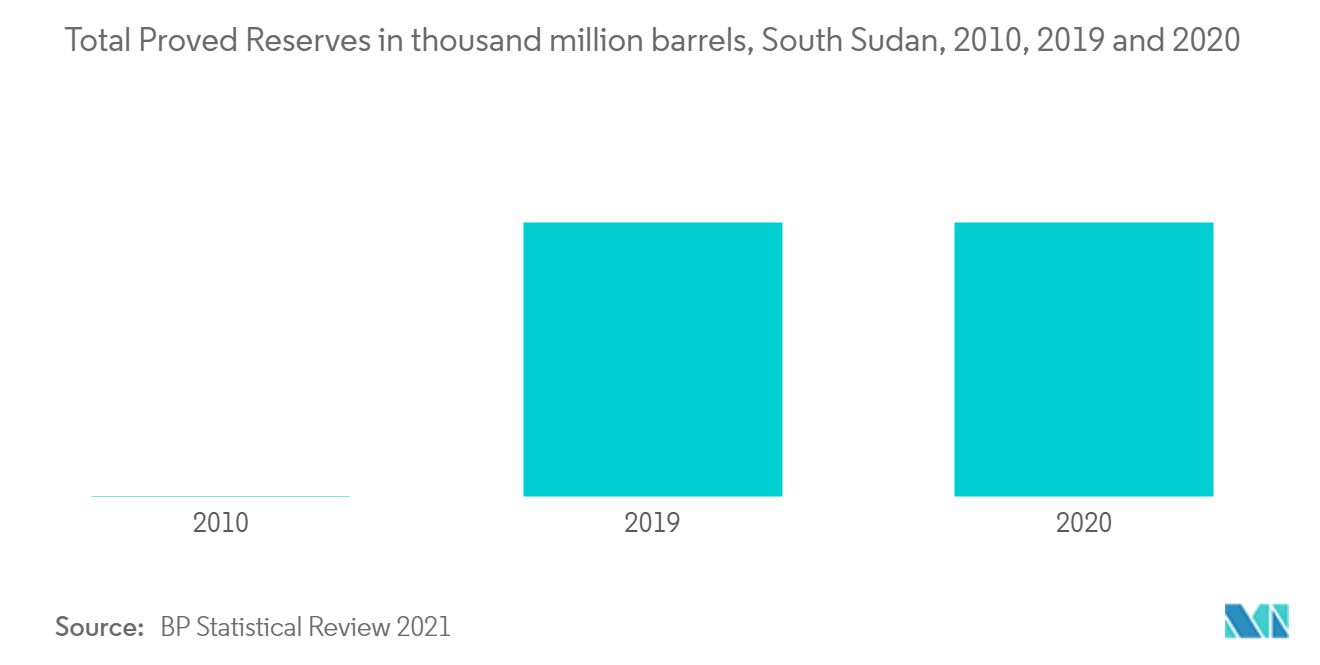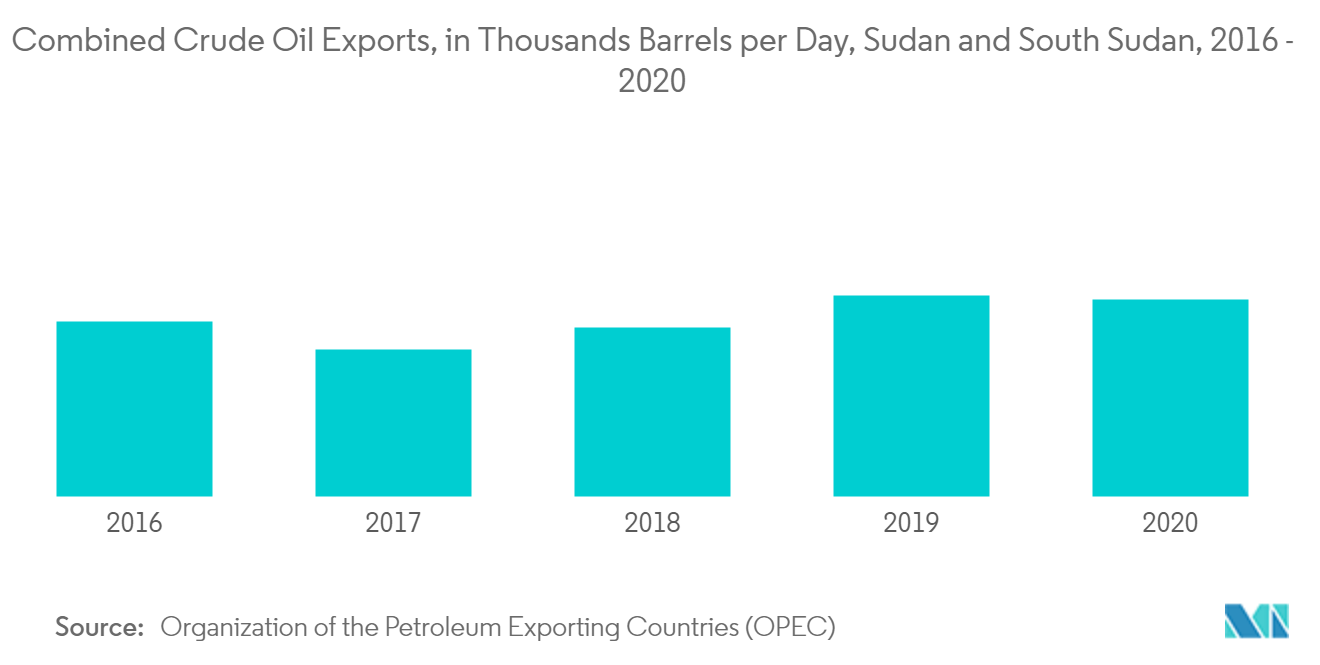Market Trends of South Sudan Oil and Gas Industry
This section covers the major market trends shaping the South Sudan Oil & Gas Market according to our research experts:
Downstream Sector to Witness Significant Growth
- The downstream oil industry in South Sudan is an important sector in the country's economy since most of the country's export earnings are spent on imported petroleum products. The South Sudan oil industry is regulated and monitored by the Ministry of Petroleum through the Petroleum Exploration and Production Authority.
- In 2021, to reduce the reliance on imports, the South Sudanese government has started to operate its Bentiu's oil refinery in Unity State, with a capacity to refine 10,000 barrels per day.
- Also, the government has planned to build four more refineries by the end of this decade to increase its refining potential. Trinity Energy was in advanced preparations to start building a 40,000 b/d refinery near the Palouch oil fields in the Upper Nile. It is also reported that one will be based in Sharjah out of four refineries being built.
- South Sudan has a substantial amount of proven oil reserves. In 2020, the country had total proven oil reserves of about 3.5 thousand million barrels. With the proposed and under construction refineries in South Sudan, the crude oil produced can be refined in the country itself to meet the rise in demand for refined petroleum products. Reserve to production ratio in the country in 2020 was 56.1%.
- South Sudan invites international and local investors to participate in a refinery project developed on a PPP basis. Proposed refineries in South Sudan are Akon, with a refining capacity of 50 thousand barrels per day, and Gameza, 100 thousand barrels per day.
- Thus, with such developments the segment is likely to have substantial growth during the study period.

Increasing Production of Oil to Drive the Market
- South Sudan increased its oil production from 148 thousand million barrels/day in 2015 to 170 thousand million barrels/day in 2020. Increased production is expected to generate the growth of the South Sudan oil and gas market during the forecast period.
- In South Sudan, the ongoing civil war and political instability have undermined its ability to increase output to peak production capacity. Low investor confidence and the unfortunate security situation pose severe obstacles to the government's ability to boost crude oil production. However, an end to the conflict can significantly increase the market's growth.
- In September 2020, Sudan and South Sudan signed an agreement to boost oil production between the two countries. The two countries agreed that it is necessary to increase South Sudan's oil production, use Sudan's existing expertise and capabilities, benefit from it, and speed up the process of establishing a coordination office in South Sudan. Thus, the co-operation of the two countries will also support the market's growth during the forecast period.
- Combined Exports of crude oil from South and South Sudan have increased from 128.6 thousand barrels/day in 2016 to 144.4 thousand barrels/day Organization of the Petroleum Exporting Countries (OPEC), as reported by the Organization of the Petroleum Exporting Countries (OPEC) in 2020. Thus, the increase in petroleum exports will boost the country's oil and gas market in the forecast period.
- In January 2021, the Ministry of petroleum in South Sudan informed that oil production in Unity state's Tharjiath oilfield had resumed after nearly eight years of shutdown following the outbreak of civil war in the country in 2013. Tharjiath, also known as Block 5A in southern Unity state, is operated by the Sudd Petroleum Operating Company (SPOC).
- Hence, increasing oil production is expected to drive the growth in the forecast period, with increasing stability expected to attract more investments into the market.


